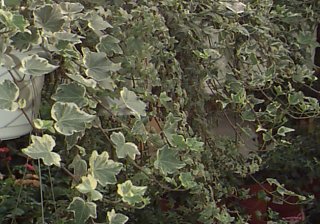Common names
Common English Ivy
Botanical name
Hedera helix
Poisonous parts
Leaves
Poisonous component
didehydrofalcarinol,
falcarinol, hederasaponins
Notes
This vine is grown both as an indoor and outdoor ornamental and
it has caused poisoning in cattle, dogs, sheep, and humans. Symptoms of ingestion are difficulty in breathing, convulsions, vomiting,
paralysis and coma. Dermatitis is rare but can be severe with weeping blisters which responds slowly to treatment.
The berries are bitter so it's unlikely children will consume them in large quantities.
Dermatitis is rare but can be severe with weeping blisters which responds slowly to treatment.
The berries are bitter so it's unlikely children will consume them in large quantities.
Hedera helix originates from Europe and in it's native habitat it is an important food source for a large number of insects and birds. English ivy is very popular as ornamental plant but this ivy is extremely invasive and is considered noxious in parts of the world where it has escaped into the wild. Ivy can become so dense as to exclude other native species creating ivy "deserts", even becoming so heavy as to topple trees - something which does not occur in its native habitat.
| Back |
 |
Photo (above): Variegated variety of English Ivy
Toxicity Information
Courtesy of:
Derek B. Munro
Biological Resources Program
Eastern Cereal and Oilseed Research Centre
Photo (left):
Ivy climbing a tree in Stanley Park, Vancouver, B.C.
To see a listing of native and invasive plants of British Columbia visit: E-Flora BC
English Ivy is listed in the NASA clear air study as being useful as an indoor air purifier.